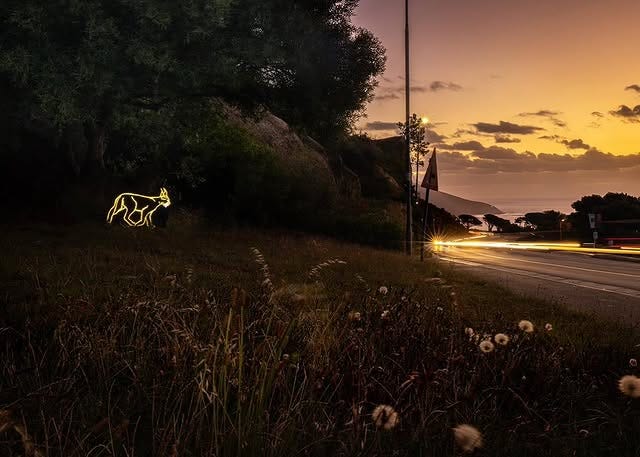On Thursday, 13 March, A/Prof Jaqueline Bishop of the Urban Caracal Project presented “Small Cats, Big City: What We’ve Learnt from a Decade of Caracal Research” as part of the MSC Seminar Series. As a member of the team behind the Urban Caracal Project, she has been actively working to seek out information about how we as a city can lower our impact, as well as live in harmony with these elusive big cats who roam all around our highly active Metropole.

The Urban Caracal Project looks to improve the lives of the caracals living in and around the City of Cape Town. Around the world, wildlife populations and their habitats continue to be threatened by the impacts of rapid urbanisation and other human activities. However, they are also adapting to these urban interferences in many different ways.
The Urban Caracal Project was founded in 2014. The survival rate of many of these carnivore populations depends on the specific stresses placed on them within the city. Cape Town is a complex mosaic of natural, industrial, residential, and agricultural activities. The Table Mountain National Park was home to plenty more animal species, but since the late 1800s, species such as the Cape Lion have been completely driven out. Since the removal of the Cape Lion, the Caracal has become the apex predator of the area. Another aspect of the Urban Caracal Project is to feed information and awareness to those organisations in power in order to implement positive changes.
The urban planning of the city has become an increasing problem over the years. Urbanisation has occurred at a very fast rate, which has led to urban sprawl, including in areas bordering the Table Mountain National Park and the Peninsula. This has caused the barrier between protected areas and urban settlements to overlap. From 2015 to 2017, the project aimed to capture and collar the caracals in order to sample different information about their whereabouts and body condition. The information collected about the caracals came from various samples, including blood, hair, weight, and sex. After 9 years, 29 caracals were examined and samples were taken.
Male and female caracals have different habits and lifestyles. For example, one male caracal was more inclined to move all around the Peninsula, from Signal Hill all the way to Constantia Nek, while one female was more inclined to stay within a certain area, specifically the Noordhoek wetlands. Caracals do not primarily inhabit the top of the mountainous area. They are mainly found within the lower lying areas, increasing their chances of human interference.
Caracals consume birds, antelope, mongoose, native rodents, and a small percentage of insects and reptiles. The fats of the deceased caracals were assessed in order to analyse the pollutant exposure. PCBs (man-made chemicals), DDT (insecticide), and 92% common rat poison were found. This, however, is not the only way humans have impacted the livelihoods of caracals. Due to their movements being in and around the urban area, mortalities have also been caused by snares, road accidents, and dog attacks. Many of their deaths have been primarily caused by vehicles. The Urban Caracal Project has been working to improve awareness on major roads to avoid these fatalities. Caracal posters and cut-outs can be found near hotspots such as Oukaapse Weg, the M3 (Tokai), and the M3 (Wynberg Hill).
Individually, you can get involved with the project by reporting any caracal sightings to the email addresses provided on the Urban Caracal Project website. We can also be more vigilant on the roads at night, as caracals are mainly nocturnal creatures. By driving more carefully, we ensure not only their safety, but also ours.
The Urban Caracal Project has greatly benefitted the caracal population in and around our city. Their research has shown the importance of acknowledging these wild creatures which share our environment and resources. The project has highlighted the fact that our actions concerning the environment not only affect our human population but also that of the biodiversity surrounding our urban areas. We therefore have a responsibility to carry out our activities in a way that is not threatening to the wildlife that share our city with us.




